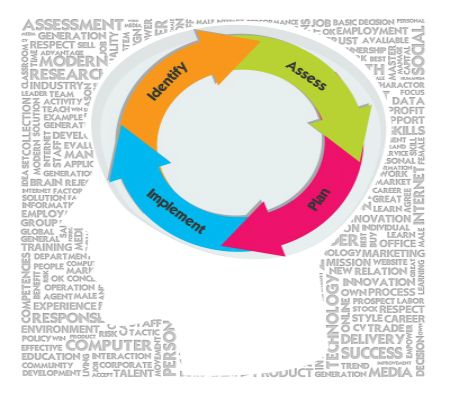Many Firms often start the process excellence journey with huge anticipation, but sometimes fail to maintain the momentum. This failure can sometimes be attributed right at the top. In a PEX Network interview, Debashis Sarkar says that the greatest symptom is that ‘CEOs sometimes lose interest in Process Improvement’:
“While someone may say that once a process improvement journey has achieved maturity, it no longer needs to be on the radar of the CEO. I do not agree with this view. Whatever the size of your company, if process improvement is delivering real value to the business, the CEO will at least review it once a month. If the CEO loses interest it is an early-warning sign that the Enterprise PI Leader is not focused on those improvements that will deliver high impact value that makes the executive team sit up and take not. The onus is on the PI Leader to communicate those results to the CEO and top management”.
“Circular Workflow Chart” by basketmanService-Centric IT solutions provider Windward, weighing in on the dilemma, has released a white paper titled, ‘IT Process Reality Check’, which demonstrates how embracing process improvement in a tough economy can be seen as a cost savings measure. False starts and wasted time and money are preventable when process improvement initiatives are initiated. In the report, Windward discusses the top nine reasons why these process initiatives failed and what can be done to prevent them in the future.
“For over 15 years in this business, we have seen the pace of business accelerate dramatically. Moreover, IT has been pressed to transform from a technology-centric to a business or service-centric organization, while dealing with increased pressure to reduce costs,” said Windward CEO and Founder Sean McDermott. “Process improvements can play a critical role in these competing objectives, and bring long-term benefit in how IT organizations align objectives with corporate strategy.”
Top Nine Reasons Why Process Initiatives Fail:
- Poor expectation setting
- Lack of balance
- No consensus building
- Lack of automation
- Inadequate leadership commitment or executive sponsorship
- Lack of practical training
- Planning and documentation stagnation
- Process zeal
- Attempt to outsource implementation

Hayden Richards is Contributor of IntelligentHQ. He specialises in finance, trading, investment, and technology, with expertise in both buy-side, sell-side. Contributing and advising various global corporations, Hayden is a thought leader, researching on global regulatory subjects, digital, social media strategies and new trends for Businesses, Capital Markets and Financial Services.
Aside from the articles, interviews and content he writes for IntelligentHQ, Hayden is also a content curator for capital markets, analytic platforms and business industry emerging trends. An avid new media explorer Hayden is driven by a passion for business development, innovation, social business, Tech Trading, payments and eCommerce. A native Trinidadian, Hayden is also a veteran, having served with the Royal Air Force Reserves for the past 10 years.
Follow Hayden on Twitter @HaydenARichards, linkedin.com/haydenhrichards and http://www.scoop.it/u/hayden-richards












